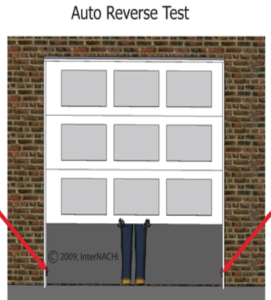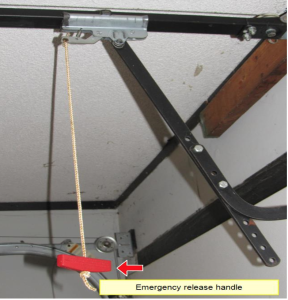Christmas Dinner, Loosening Your Belt, & Garage Doors- Why You need to Inspect Your Garage Door Monthly
Raise your hand if you had to go up a notch or two on your belt after eating Thanksgiving dinner a few weeks ago? Yeah, me too. I’m a runner so I’ve been prepping for Christmas dinner by running more the last few weeks. The more miles I run the more I can eat and not gain weight, right? Sadly, that’s not how it works. This is the most wonderful time of the year! However, my belt won’t be saying that come Sunday night. You’ll find me in my recliner in a near state of foodcoma. And, my belt is going to hate me. Being a home inspector I started thinking about the pressure my belt is going to undergo and how garage doors work.
Garage doors are among the heaviest moving objects in a home and are under a great deal of tension due to the springs that assist them (just like my belt is going to be after Christmas dinner). Since garage doors are under so much tension and strain, some parts need to be replaced over time. Most garage door manufacturers recommend that the doors and their components be inspected once per month by the home owner. The Door & Access Systems Manufacturers Association has written a technical data sheet check list that consumers can review and use to inspect their doors. Click here to get the data sheet.
Without restating what is in the check list, I will go over some of the most common defects that I find when inspecting garage doors and openers.
Electric Eye: The electric eye safety feature is designed so that if the beam is broken the door will automatically reverse. The electric eyes should be no more than six inches off the ground. If they are higher, small pets or children can go underneath without triggering the stoppage of the door.
Automatic reverse: The door should automatically reverse when it is met with minimal resistance. Place a 2×4 on the ground under the door, and when the door hits the 2×4 and doesn’t reverse then it needs to be adjusted by a qualified garage door contractor. No 2×4 block? You can also test this feature by trying to hold the door, with minimal resistance, as it is going down.
This is a secondary safety feature along with the electric eye that should be operational to prevent a child, adult or pet from being crushed under the door. Because no one wants to see their garage door go Hungry, Hungry Hippos on their loved one.
Spring Containment: The garage door is very heavy and counterbalance or torsion springs are used to assist in the opening of the door. The springs should be restrained by a separate cable or shaft so in the event that the spring breaks, it is contained by the cable or solid shaft. I have seen the result of a garage door spring break without the containment cable. The spring broke with enough force that it went through a sheetrock wall. If a person was in the way it could have seriously injured or killed them.
Emergency release handle: Doors should have an emergency release handle for doors equipped with automatic openers . This allows the door to be opened in case the power is out or the auto- opener malfunctions. Pulling the red handle will disengage the door from the auto-opener allowing the door to be opened manually (see picture below).
Every time you use your garage door it’s like you and me eating during the holidays. If we ate like that everyday we’d all be miserable. Your garage door? Not so much. It was made to handle the torsion and tension. However, friends please perform a monthly check up on your garage door. You don’t want your garage door to look like my belt on Christmas night!





